Packing Tips for Long-Term Travel
In this guide, we will help you create the ultimate long-term travel packing checklist.
We have done our fair share of long-term travel adventures, from Backpacking around South America to Ski Seasons in Canada, from volunteering in Africa to spending 15 summers working in New York.
We have become accustomed to packing our entire lives in a backpack and hopping on a plane.
We will introduce you to some of the best packing tips for long-term travel that we have found throughout the years.
We will guide you through what to pack, how to pack, and how much you need to pack for long-term travel.
Long-term Travel Packing Tips
It’s 1am, your taxi to the airport is booked for 3am, and you’re still waiting for your printer to stop jamming while attempting to print off your visa documents.
You haven’t even thought about packing yet, and you just realised that half of your underwear is still in the dirty laundry. Sound familiar?
After too many (more than we are willing to disclose...) experiences of last-minute scrambling to pack our entire lives into two 50L backpacks before setting off on another adventure, we want to share a few packing tips and hacks that have helped us with the dreaded task.
It’s one thing packing for a weekend city break, but where do you start when your trip has no return ticket?
Don’t panic - our long-term travel packing tips will help you.
Disclaimer - This blog post contains Amazon affiliate links where we earn a commission if you make a purchase through them (at no extra cost to you).
Is a backpack or suitcase better for long-term travel?
Backpacks or suitcases - which are better for long-term travel?
This hotly argued topic splits many travel aficionados straight down the middle. Some suitcase sympathisers argue that for long-term travel, a roomy suitcase is exactly what you need!
However, if you have ever experienced hauling a heavy, hard case suitcase up 5 flights on a spiral staircase to get to your hostel dorm in 40-degree heat (thank you, Cartagena!), then you too would be ditching the case for something lighter and less sweat-inducing.
It may sound obvious but a solid backpack is definitely our no.1 most important item when embarking on a long-term travel adventure.
Whether you are planning to stay in hostels, hotels, campsites or couch surfing, a well-organised backpack will make moving from place to place so much easier.
When packing for a long-term adventure, perhaps a gap year for couples, it can be tempting to pack everything plus the kitchen sink. After all, you’re potentially travelling for a year or more, so choosing what to pack can be difficult.
So, while backpacks are versatile and easy to carry, there might be instances or destinations where bigger suitcases, bags, or extra large luggage, like the Eminent XXL suitcase, could come in handy, especially for those items you want to keep crease-free or protect from potential damage.
That said, relying solely on such large suitcases could hinder spontaneity, as they might not be as agile as a backpack in certain situations. It's all about weighing the pros and cons and deciding based on the nature of your journey and destinations.
However, by restricting yourself to a backpack, you instantly avoid packing those non-essential items that will only weigh you down.
Which brings us to our next tip…
DO NOT buy a backpack over 70L capacity!
Perfect sized backpack for long-term travel
Although buying the 90L expedition backpack may seem like the perfect option at the time (think of all the extra shoes you could fit?), fast forward to when you are slinging your backpack onto the floor for the 100th time because it is far too heavy to trek across the city to your next hostel, and you will soon regret your choice.
Of course, we all come in different shapes and sizes, and our ability to carry different weights varies, too. However, we promise that, unless you are Dwayne the Rock Johnson’s body double, going for a backpack above the 70L mark will seriously burden your trip. One of our hiking tips for couples is to use a 55L backpack for overnight/multi-hikes, and we don’t think you’ll ever need something bigger for your long-term travel plans.
Backpack tip: our ideal backpack combination for long-term travel is a main backpack ranging between 55-66L and a smaller 20L day pack to carry valuables such as cameras, passports and water etc.
This was the combination we used when embarking on our most extended travel trip so far, which combined working in a summer camp in the USA, a 6-week backpacking tour through South America and working a ski season as a couple in Canada for over a year and a half. Less is more!
Packing cubes are essential for Long-term travel (They will change your life)
Packing cubes are essential for long-term travel
At first, we thought the hype overshadowed the reality regarding packing cubes. They seemed like an unnecessary indulgence and one more way to add extra weight to your backpack. We couldn’t have been more wrong.
These little zippered compression bags are our new favourite addition to our long-term packing arsenal.
Not only do they allow you to categorise your clothes smartly (never again will you have to empty your entire backpack onto the hostel floor to find a clean pair of socks), but they also help to compress the size of all of your clothes. This works a dream for larger, bulkier items such as jumpers or jeans.
We have found the Gonex Compression packing cubes to be our personal favourites. They are super lightweight and have two robust zips to help compress your clothes. We have, admittedly, overfilled these cubes and never had a problem with the zip popping open or breaking.
Top tip: packing cubes often come with a shoe bag. We like to use ours as a dirty laundry bag whilst on the move!
Full-Size Microfiber Towels
Instead of wasting half of your backpack space with a fluffy towel from home, opt for super compact microfiber towels. You cannot afford to waste space in your backpack when planning to travel long-term.
Unfortunately, these microfiber travel towels do not compare to your classic cotton bath towel for luxury or comfort, but their quick drying properties and ability to absorb up to 8x the amount of water of a regular towel make them a no-brainer when it comes to clever long-term packing.
Make sure to go for a full-size or XL towel as some ‘travel size’ options are simply too small.
Hostel tip: microfiber towels also act as great barriers between you and dodgy hostel bed sheets. One of our best tips for surviving as a couple in hostels is to prop a towel up at the side of a hostel bed, to give you a little extra privacy when you don’t feel like talking to everybody else in the room.
Packable Rain Jacket
Packable rain jacket for traveling
One of the most challenging elements to consider when packing for a long-term trip is mother nature herself. You might end up travelling through multiple seasons, and a pair of shorts and a T-shirt aren't always going to cut it, unfortunately.
A packable rain jacket is an absolutely essential item. Maybe being from the UK and Ireland, we consider this more of an essential item than others. However, we promise you will thank us when your adventure around Thailand turns into a tropical storm.
Keeping one of these in your daypack instead of your main backpack allows you to be ready for any weather threat and keeps it in an easy-to-reach location.
Spare Jumper in Day Pack
All of our things in one backpack
On a similar note to the last point, keeping an extra layer such as a fleece or jumper in your daypack can be an absolute lifesaver.
When your bus driver suddenly decides to save on fuel by turning off the heating as you wind your way up in elevation and down in temperature through the Andean mountains, having an extra layer to hand will make the remaining 28hr bus journey a little more comfortable.
Split the load of heavy items when packing for long-term travel
If you find yourself packing for long-term travel with a partner or group of friends, avoid unnecessary weight by sharing heavy items such as shampoo, conditioner, body wash and other toiletries.
Investing in every travel-sized toiletry you can find in the supermarket before you depart is neither going to last you more than a few days of your long-term travel trip nor help when they all explode over your perfectly organised clothes. Again, less is more.
Assign one full-size toiletry to each person or split evenly between a couple, or even wait entirely until you get to your starting destination and pick up shampoo en route. Unless you are restricted to a particular brand for health/allergy reasons, you will never struggle to find the holy trinity of shampoo, body wash and toothpaste.
Suppose you want to avoid the hassle altogether, in our experience. In that case, most hostels have a treasure trove of left-over toiletry essentials from backpackers past and are usually left for communal use.
Splitting our heavy items between two backpacks
Pack Two Pairs of Shoes and Flip Flops
This may sound like the stuff of nightmares for some people, but when travelling with a backpack, space is sacred, and you need to use it wisely. In an ideal world, it would be lovely to have a pair of shoes for nice occasions, trainers, hiking boots, sandals, flip-flops and maybe even some slippers for walking around grubby hostel floors.
In reality, though, a pair of flip-flops can easily masquerade as chic, boho style evening wear and double up as useful hostel shower shoes, all on the same day.
Our shoes suggestions:
1x pair of regular trainers - these will get you through day-to-day wear, and you can keep them in relatively good condition for evenings at restaurants or bars.
1x pair of waterproof, durable trainers - perfect for all-weather exploring and the odd longer hike. It is useful to have an alternate pair of trainers in case your first pair get wet and you don’t have time to dry them out. (No need to carry around heavy hiking boots unless you plan on embarking on regular serious hikes throughout your trip).
1x pair of flip-flops/slides - the chameleon of the shoe world, slides or flip-flops, will get you through every travelling situation. Perfect for hot days spent wandering around market stalls or when you're back in the hostel and chilling by the pool. They also fit easily into your backpack side pocket or simply squished into a day pack.
Jeans or Leggings for Cold Bus/Flight Journeys
More often than not, even if you are travelling through the equivalent of the Sahara desert, many modes of transport tend to have routinely broken internal thermostats. This results in often long, freezing journeys whereby your West Coast California beach wear isn’t going to suffice.
When travelling long-term, pack at least one pair of full-length leggings, sweats or jeans to combat even the chilliest of airports or bus terminals.
You always want to be comfortable when travelling
Travel Pillow/Pillowcase
This one certainly does not fall into the category of essential items; however, if you have ever been in the all too familiar backpacker situation where you enter your dorm room to find your bed sheets are either non-existent or adorned with stains that you would far rather not know the origin of, you will be thankful for this small suggestion.
Bringing a spare pillowcase or travel pillow will at least provide some barrier between said unknown stains and your head, allowing you to sleep easily after your long day of travelling.
Packing tip: an empty pillow case acts as a great tool to separate dirty laundry from the rest of your clothes in your backpack.
Travel Size Laundry Detergent for Emergencies
A tip handed down from Orla’s Irish Mammy, Pat - packing a small, travel-sized, reusable container of laundry detergent will save you on those days when you wake up, and there isn’t a clean pair of underwear in sight.
Any hotel, hostel or Airbnb sink can quickly be turned into a temporary washing machine. Just make sure that if you are camping or disposing of water in nature, you use eco-friendly soap!
Reusable Water Bottle
No viable long-term travel packing list would be complete without a reusable water bottle.
Water is your most valuable possession when travelling. Even when you think you may have enough, it never will be. Whether you are trekking through the Amazon on a 3-day long expedition or wandering through the quaint, narrow, cobbled streets on the Amalfi Coast, a good water supply is utterly essential.
With so many options out there, here is a quick breakdown of our top 3 suggestions for reusable water bottles:
Nalgene 32oz Wide-Mouth (£9 - £14 approx)
The 1L capacity strikes the perfect balance between providing a sufficient water supply without being too cumbersome or heavy to carry in your day-pack.
They are super durable! Drop this water bottle down the side of a rocky mountain hike, and (if you can retrieve it...) the most you will be met with is a few superficial scuffs - the perfect option for adventure travellers!
BPA/BPS free
Super lightweight
Very cheap
No thermal qualities
S’well 500ml, 750ml Original Bottle (£24.50 - £31.50 approx)
The S’well’s most important feature - setting it aside from other water bottles - is its thermal abilities. Allowing you to keep water ice-cold for up to 48hrs, or hot for up to 24hrs - it is the ideal option for those who are looking to keep their water supply freezing cold all day long.
It does come in a range of sizes, but we found the 750ml to be a little cumbersome due to the weight - coming in at 450g before you fill it with water, it is over double the weight of the Nalgene (177.25g)
BPA/BPS free
A more expensive option but reasonable for thermal properties
LifeStraw Universal or LifeStraw Go (£35 - £50 approx)
LifeStraw is an acclaimed specialist in the water filtration world. Their ability to protect against 99.999% of bacteria (including E. coli and Salmonella), parasites, chlorine, microplastics, dirt and silt position the Life-Straw as the ultimate travel aid.
If you already have your own favourite reusable water bottle, you can opt for the LifeStraw Universal, which can adapt to most conventional reusable water bottles (see complete compatibility list here)
Alternatively, opt for the LifeStraw Go, which incorporates the filter into their water bottle design, ranging from 22oz to 1L.
Ideal if travelling in an area where tap water is not drinkable - replace copious amounts of earth-harming plastic bottles with the Life-Straw.
The most expensive option in our line-up - however, a hugely useful tool and something we will never again travel without - using a life straw is one of our tips for how not to end up in a Bolivian Hospital!
Best water bottles for travelling
Multiple USB - Universal Travel Adapter
Nowadays, long-term travel is only possible with all of our gadgets. From mobile phones to laptops, cameras to tablets, or even sat-navs to smartwatches, we think you would be hard-pressed to find a long-term traveller who doesn’t travel with at least a few of these luxuries.
A reliable travel adapter to keep your travel gadgets fully charged is essential for any credible long-term travel packing list.
Long-term travel tip: long-term travel might bring you across multiple different countries, continents and time zones, so opting for a universal travel adaptor will make sure you can use it wherever you go.
Another must-have feature is multiple USB ports. Practically all devices nowadays charge via USB. By having one charging unit that can charge your phone, iPad and smartwatch simultaneously, you’ll not only save time waiting to switch one plug out for the next but also cut down on precious weight by only bringing the USB leads for each device.
We own a travel adaptor with 4 USB ports that is compatible with Australia, US, Japan, UK and EU sockets. Not to mention it comes in a convenient little travel case!
Lightweight, packable down jacket
We can’t highlight enough how useful and versatile these jackets are and you don’t have to spend a lot of money to get a half-decent one.
Sure, you can easily splurge upwards of £150 on a branded, real down jacket, but in our experience, a cheaper, synthetic down jacket will do the job! The absolute joy of these jackets, though, is their packability.
Most will come with a small stuff bag that, similar to how you pack down a sleeping bag, will reduce your super puffy, warm jacket to a fraction of its original size. The perfect long-term travel accomplice, especially when you plan to spend time in warmer summer climates and colder winter ones, too.
Top Tip: If you're finding it hard to fit larger items such as coats or jumpers into your already overflowing backpack, wear them onto the plane! You can always take them off if you're too warm on the plane, but at least you’ll have them with you for when you’ll really need them.
Bring a first aid kit
A travel first aid kit is essential for long-term travel
The one thing that people always forget to pack for long-term travel. Even though you were advised countless times by parents, friends and family, a first aid kit is often something that many travellers forget to include in their packing arsenal.
This doesn’t mean that you have to sacrifice precious packing space for multiple boxes of malaria tablets or reams of plasters. Bring one small zip-lock bag (more on the importance of zip-lock bags later) full of everything you may need to stay healthy on your trip.
Trust us, this may sound like an unnecessary item but when you’re travelling long-term and you get ill, you want to have any remedies immediately to hand so you can just carry on with your adventure.
Long-term travel First aid kit tips:
Take all tablets out of their boxes - If your trip requires you to bring long courses of Malaria tablets or you take regular medication that usually comes in bulky packaging, bring one set of medication instructions and one box of packaging, then take the other sets out of their packaging and dispose. This way, you will have all the necessary information with you but without the unnecessary bulk.
NEVER forget diarrhoea medication - it happens to even the best of us… and just one of these small tablets can often make the difference between the very best and the very worst bus journey of your life.
Blister plasters are gold - they will save your poor heels and feet from even the gnarliest of hikes!
Allergy Card - thankfully, this is something that neither of us has to worry about. Still, we have seen people who suffer from nut allergies or food intolerances who carry a small business card-sized piece of paper with the sentence “Hi, I am allergic to [insert allergy]” written out in multiple languages. This can be super helpful when dining at restaurants or cafés abroad.
Pack a reusable ‘bag for life’ - preferably plastic
If you decide to take on any of these long-term packing tips and tricks, let this be your choice!
You probably have hundreds of them lying around your house, so next time you go to pack for your upcoming trip around the sun, stuff one in and thank us later.
When travelling, particularly for longer than your average weekend break away, you will have to become a little savvy regarding organisation.
Enter… the humble, reusable plastic bag!
Handy uses of a plastic bag for the average, long-term traveller:
Use it to store wet swimwear when you don’t have time to fully dry your bathing suit before boarding your next plane!
Backpacks can quickly become disorganised vessels of chaos after a few months of being on the road - use the trusty plastic bag to separate dirty, muddy shoes from the rest of your clean clothes.
Similar to the last point - plastic bags make for great laundry bags, too. Nothing is worse than opening up your backpack after a long day of travelling and being met with the stench of dirty laundry!
Use it to store opened toiletries (this is why the plastic element is key) - never trust an opened bottle of shampoo… no matter how many times you make sure the lid is screwed on, it WILL find a way to leak all over your freshly washed clothes.
Finally, we have no shame in using our reusable plastic bag as a not-so-chic beach bag! If it isn’t obvious by now, the options are endless!
Bring a Power Bank with multiple ports
Power banks will always come in handy for long-term travel
A handy tip for long-term travel packing is to ensure you, or somebody in your travelling party brings a reliable power bank.
Suppose you are anything like us and depend heavily on your phone for taking pictures, searching for cheap places to eat or storing your virtual boarding passes. In that case, you have probably experienced the stress of making that 1% of battery last as long as possible!
Having travelled for the past few years with multiple cheap power banks between us, we decided to invest in one single power bank that can charge all of our phones, iPads and more multiple times over.
Not only will this save on precious luggage weight and space, but it will also save you many hours of waiting around in hostel dorms for all your power banks to charge.
Best portable power banks suited to long-term travel:
Imuto Portable Charger 20000mAh (£23.99 approx) - The cheapest in our top picks, the imuto stands up beside the more well-known brands such as Anker with ease. It is the smallest in size, weighing in at 410g, making it a great option for popping into your day pack whilst out exploring. It has 2 USB ports for dual charging and comes with a handy LED flashlight, too. Its best feature, however, is its digital power display box, allowing you to always know the remaining charge left in the power bank.
Anker Power Bank, PowerCore 20100-20000mAh (£27.99 approx) - Arguably the most reliable brand in the power bank world, Anker has a plethora of options for every traveller’s needs when it comes to charging on the go. With dual USB ports and the ability to charge an iPhone 8, 6.8 times on full charge, the Power Core 20000mAh is more than sufficient. Taking approximately 12hrs to recharge fully, the power bank is also compatible with both Apple and Android formats.
Anker Power Bank, PowerCore 26800mAh (£39.99 approx) - The most powerful and robust option in our top picks, this power bank not only boasts 3 USB ports for optimum charging but also a dual input port for double speed recharging (6.5hrs). With the ability to charge an iPhone 8 9.6 times before needing to be refuelled, you will be hard-pushed to find a more hardcore power bank. It is, however, the heaviest option, weighing in at almost 500g: a small price to pay if you want complete reliability when charging on the go.
Pull all papers in a document folder
Important Travel Documents in one folder
Our final tip for long-term travel packing is potentially the most important - a folder containing all your vital documents.
Long-term travel might require you to have more documents with you than your average weekend getaway. Between visas for different countries, passports and vaccination certificates, to name just a few, it can become quite the minefield when asked to present one of these at the airport.
It is also worth noting that hostels will often ask for such documents, so we recommend carrying a small folder in your day pack (instead of stuffing it into the bottom of your suitcase the second you leave the airport).
Some ideas for what to include in your documents folder:
Passports and photocopies of passports (useful in case of loss or misplacement)
Visa documents
Vaccination certificates (e.g. Yellow Fever Vaccine comes with a small yellow card that you must bring with you)
Booking confirmations
Travel/Health insurance card or policy + emergency medical contact number
Emergency cash - having a stash of emergency funds somewhere other than your main wallet can come in very handy. We all hope it doesn’t happen to us, but theft and loss can utterly ruin a trip - be prepared by carrying a small amount to get you by in a worst-case scenario.
Top tip: print a copy of your travel insurance to take with you in the event of an emergency. Our affordable travel insurance recommendations will tell you which is the best package to get.
Bonus Packing Tip - Bring at least one travel game
It cannot be denied that playing a game with strangers you have just met is the best way to bond while travelling. The only trouble is, often, people don’t take games with them because they fear they will take up too much room.
Therefore, it is important to pack the best travel games that are lightweight, compact and can be played as a couple or with friends.
Travel Games always bring travellers together
There we have it folks, our extensive round-up of all the helpful long-term travel packing tips we have accumulated over the years. If you have ever struggled to work out what you need to pack when travelling long-term, then we hope this guide has helped you out.
One of our useful tips for surviving travel as a couple, is to start as you mean to go on by packing everything properly and efficiently. If you start well, the rest of your adventure will be a breeze.
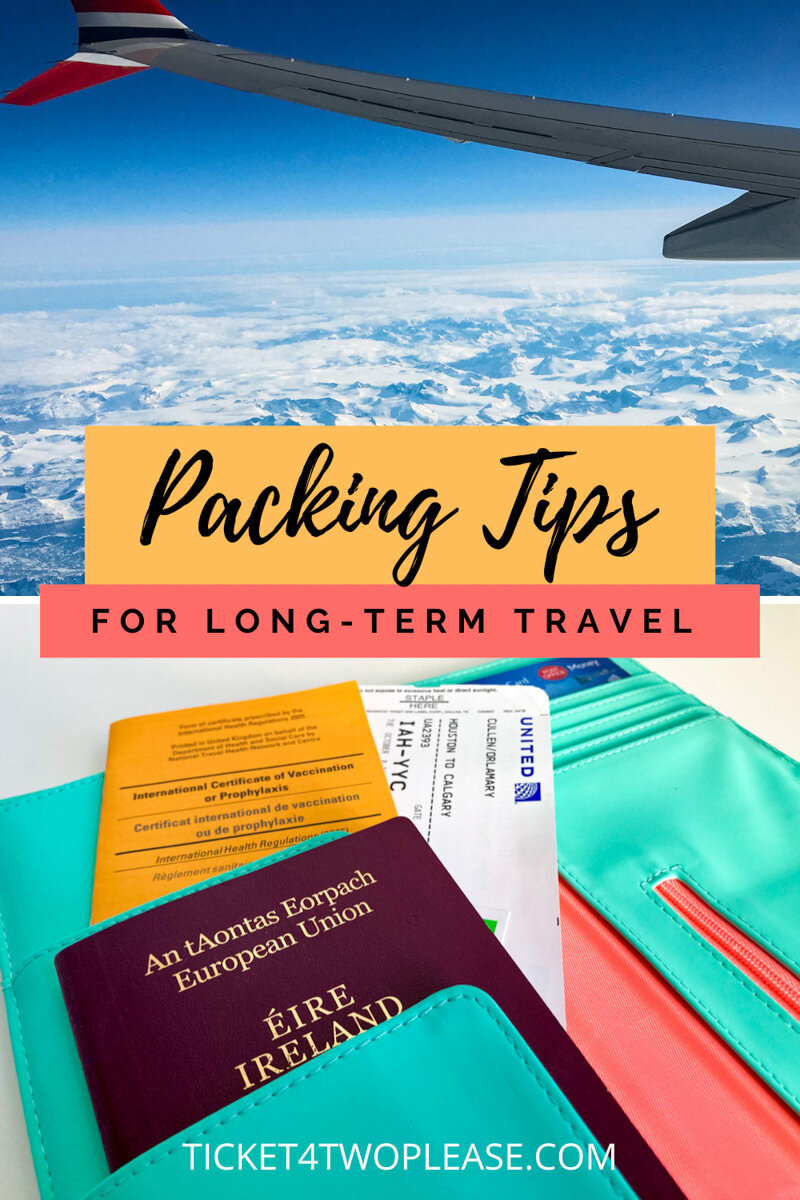
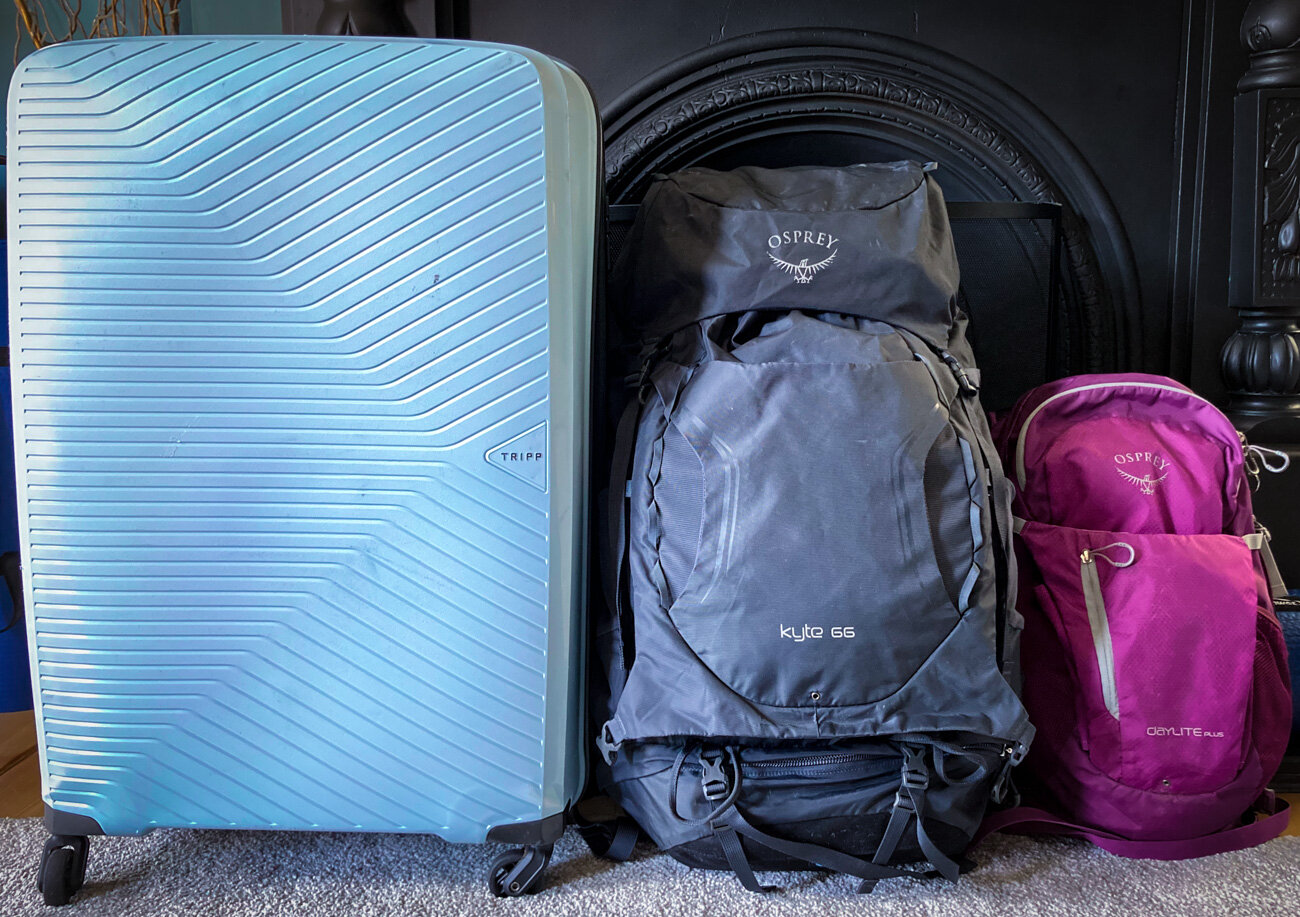

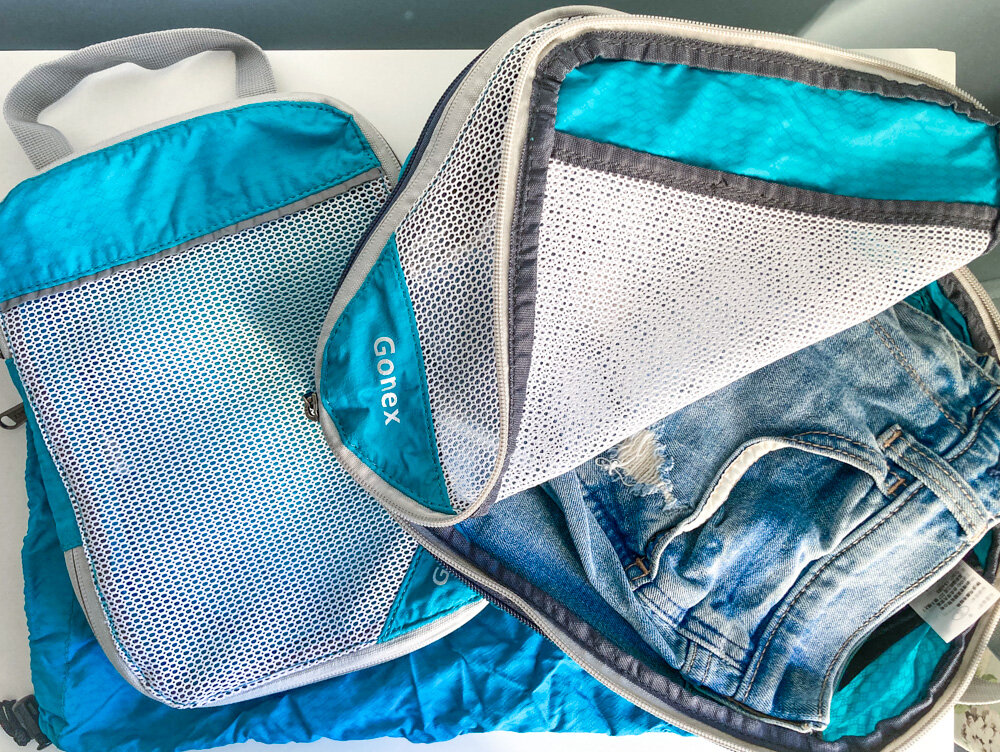
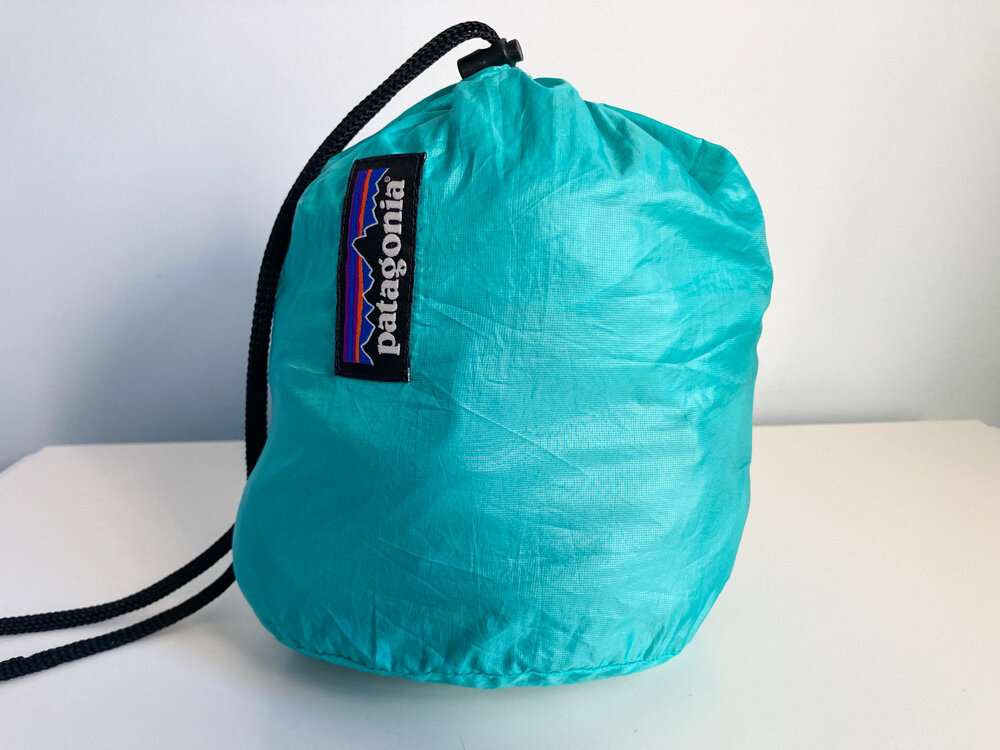

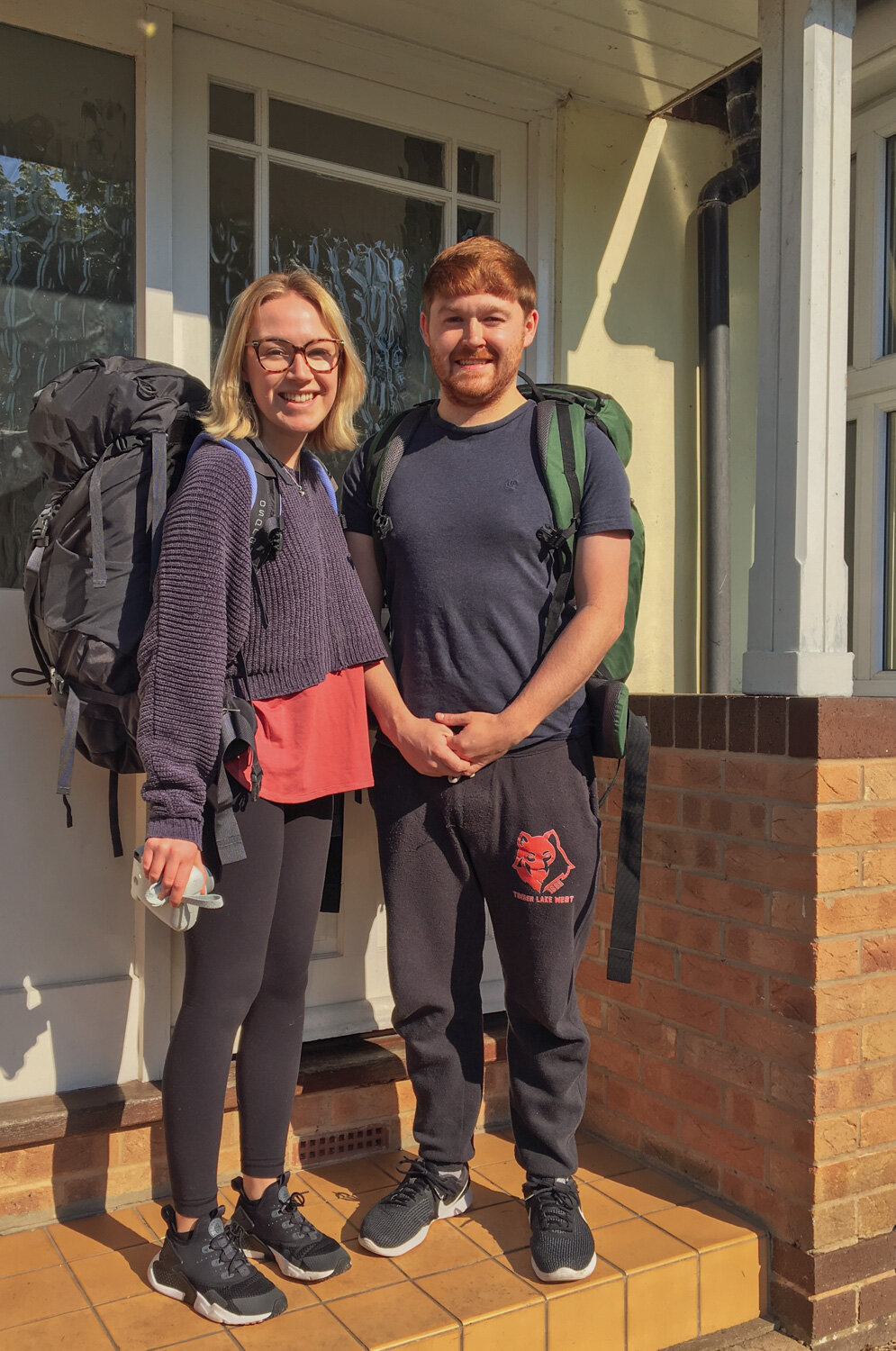
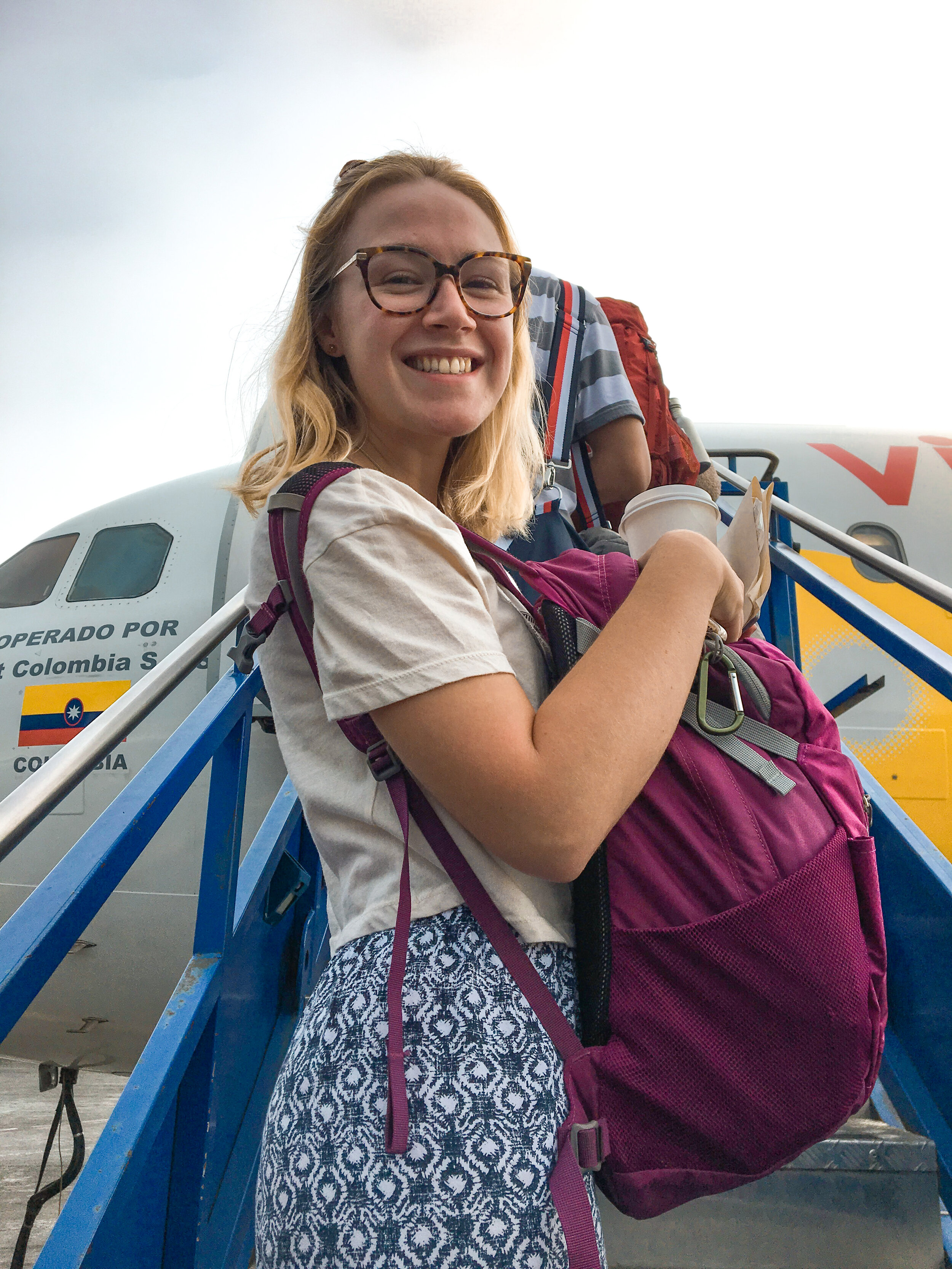
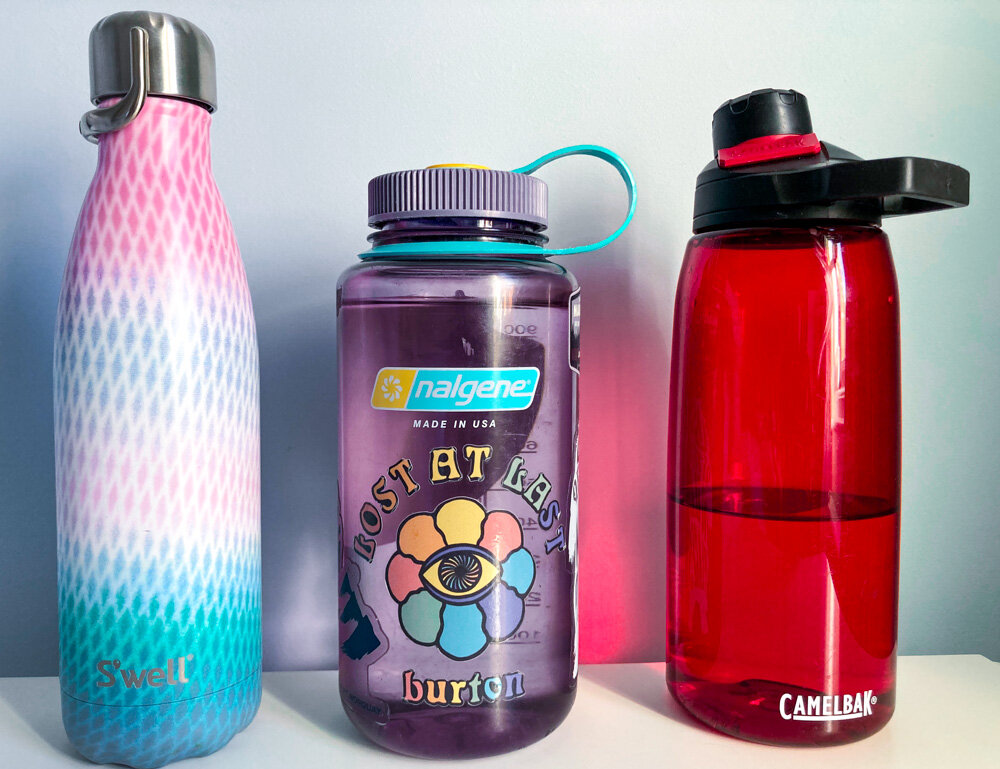
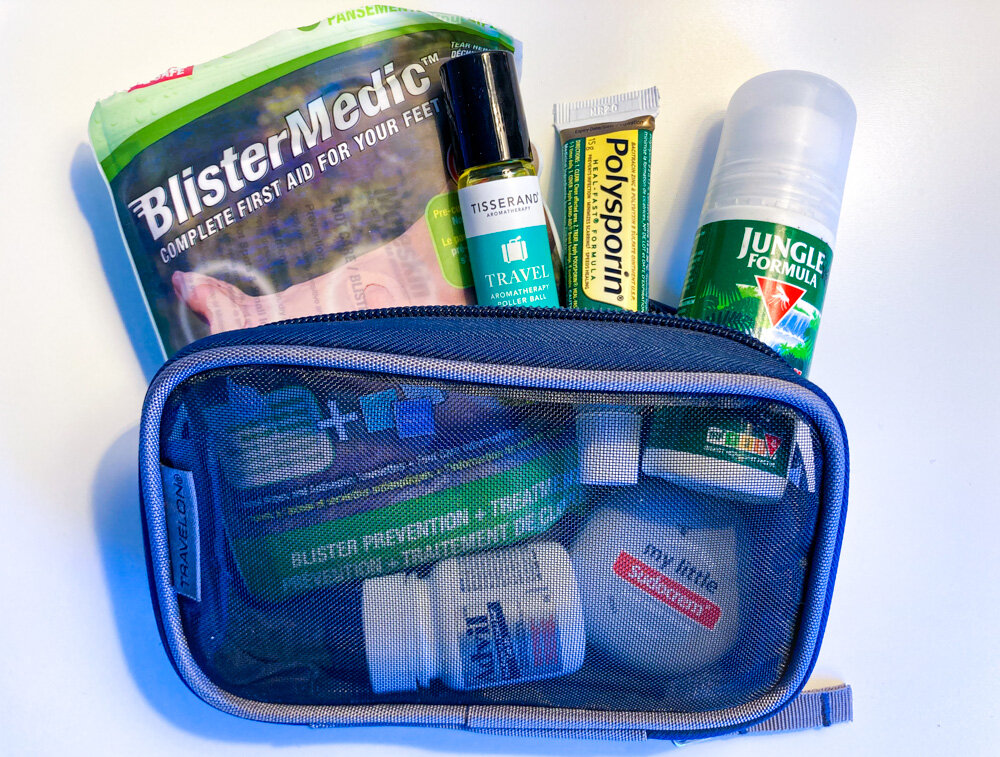
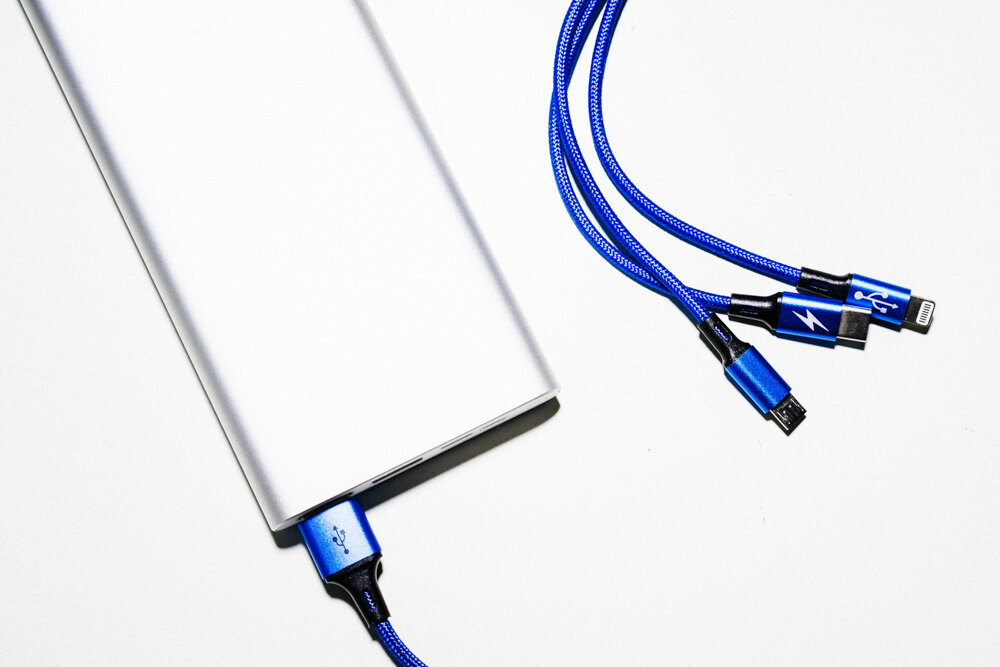
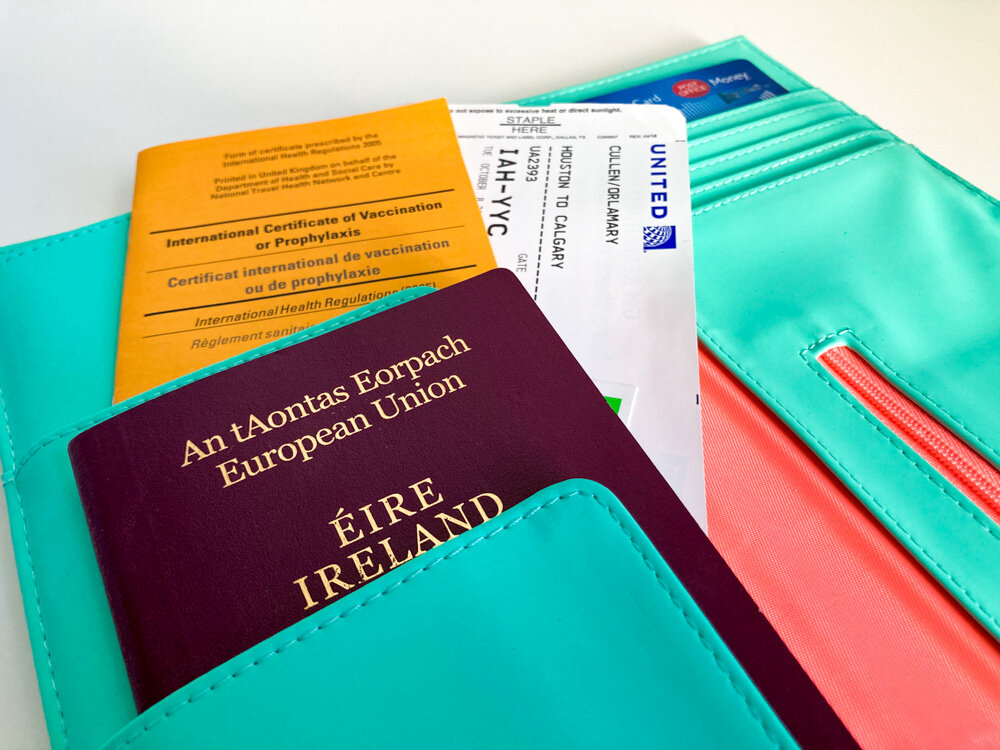









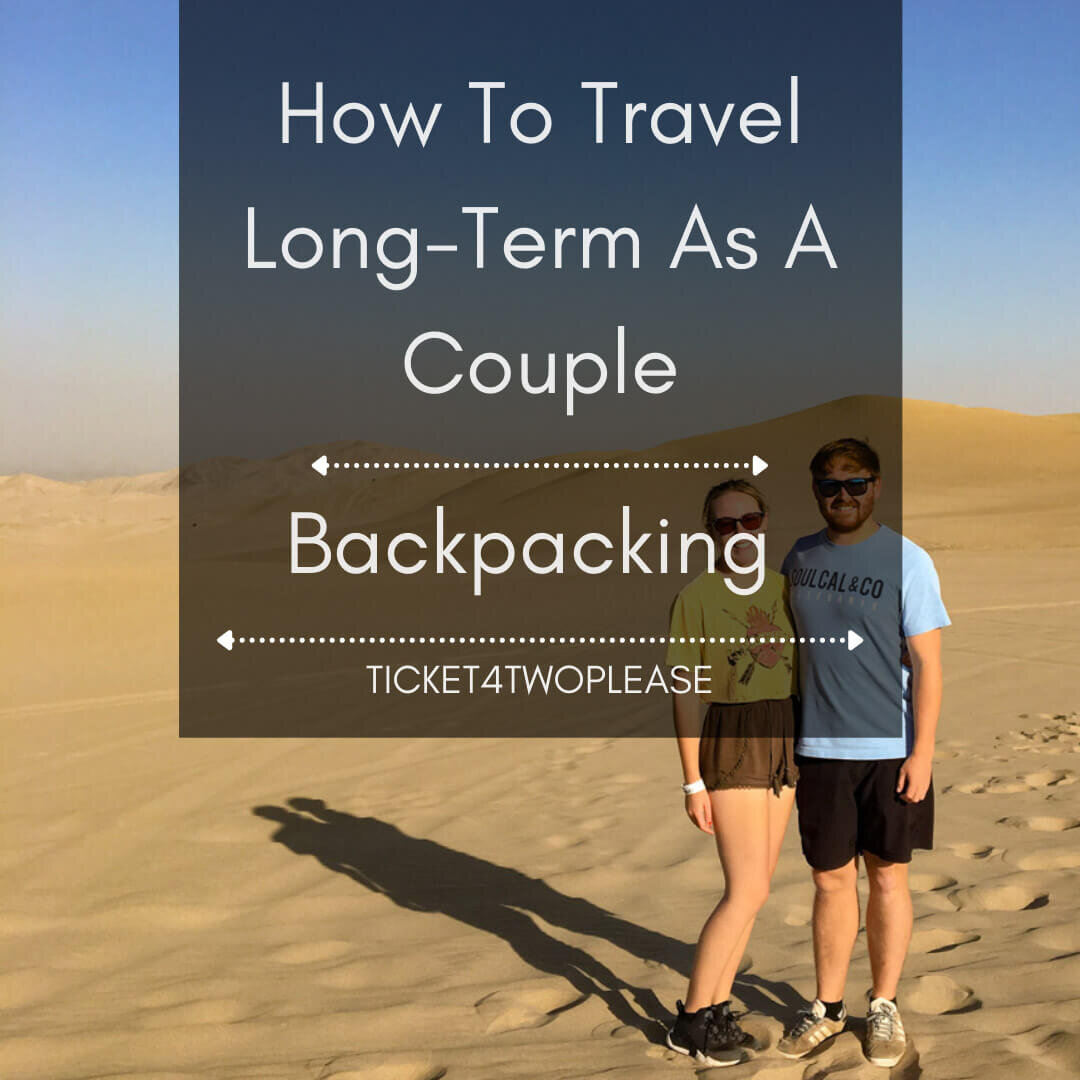
We are going to introduce you to some of the best packing tips for long-term travel that we have found throughout the years. We will guide through what to pack, how to pack, and how much you need to pack for long-term travel.